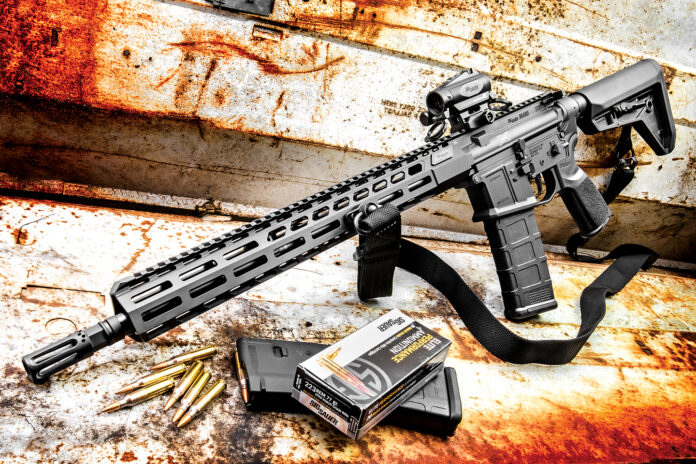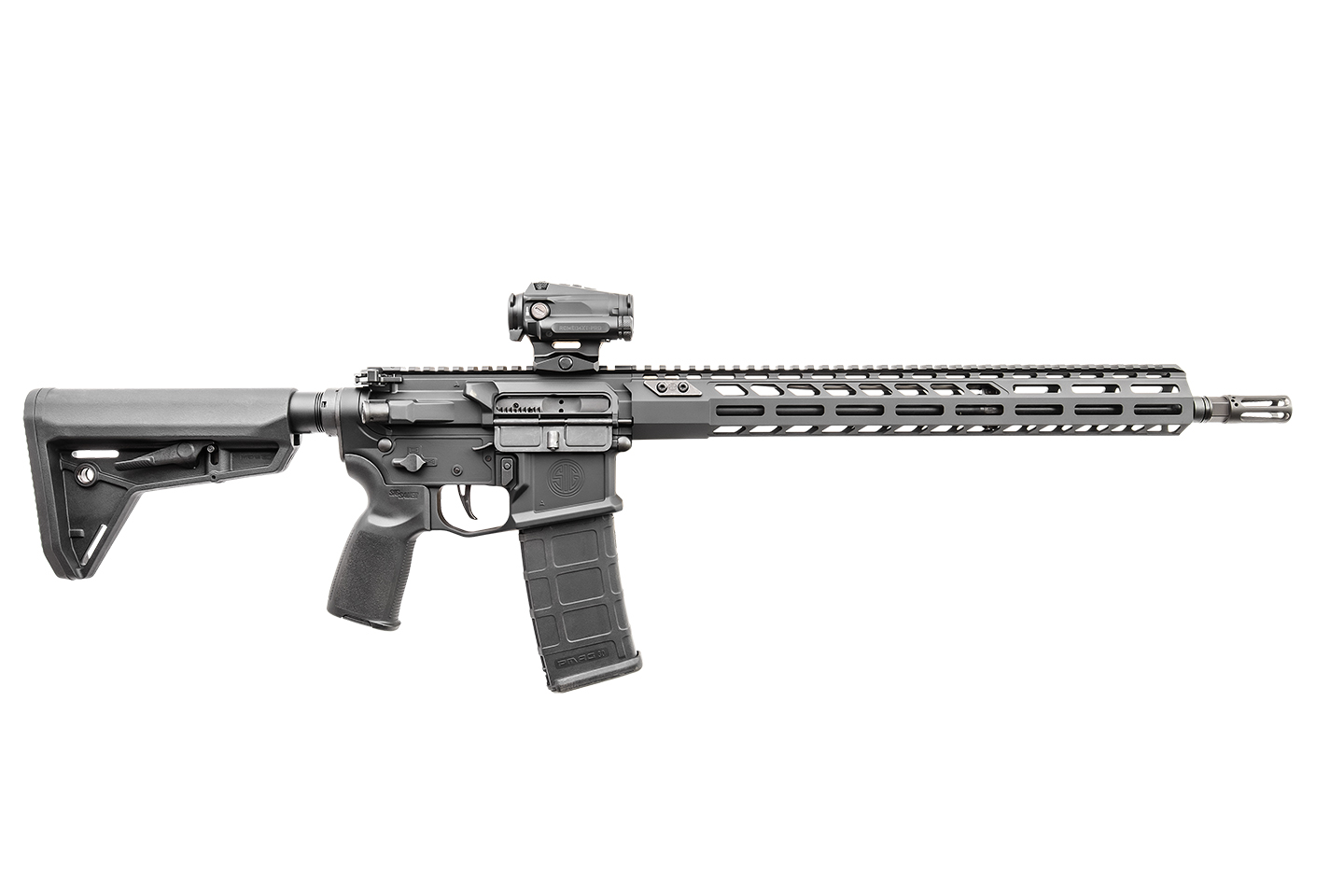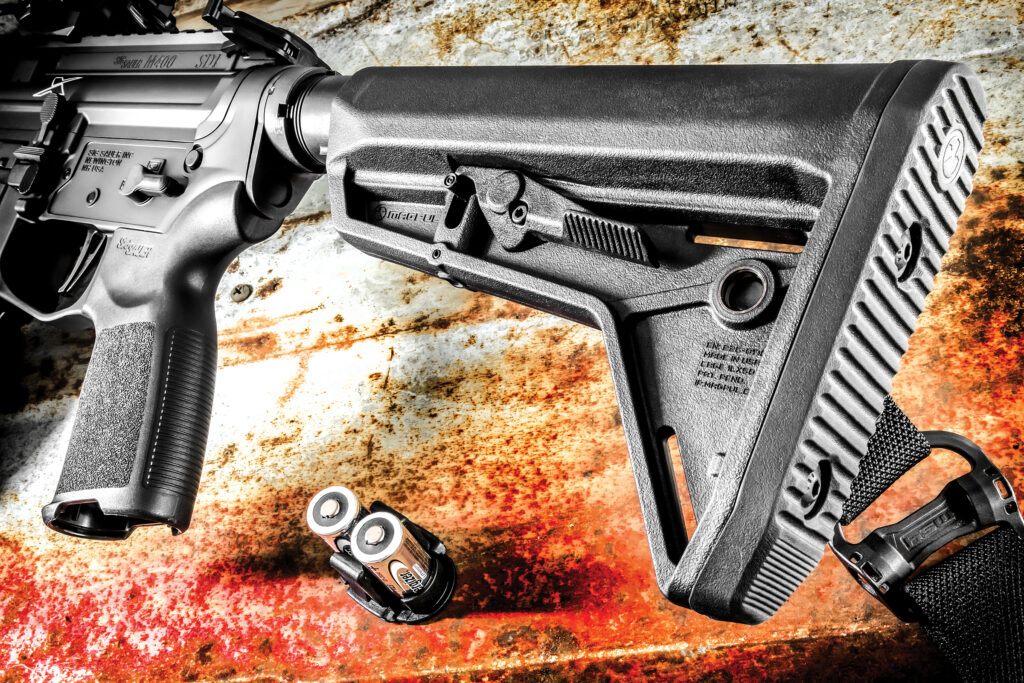Sig Sauer M400-SDI
By: Guy Coursey
Sig’s factory-custom DI carbine delivers more for less
I’m always amused to hear some of the less enlightened and apparently blind in our country opine how the AR-15 is not in “common use.” Regardless of what you believe or reality you happen to live in, it is hard to deny there are a whole bunch of AR-15s out there (20 million or so…), and the vast majority are in the hands of responsible, law-abiding citizens. And the number is growing steadily. As the number of evil black rifles has increased, the overall quality has improved, the accessories have multiplied, and consumers are presented with a dizzying array of choices. If you are like me, you already have more than a few AR-15s. Or, maybe you are one of those who has decided to take the plunge and get your very first for self-defense, competition, or just some shooting fun at the range. While some will go with what they get straight from the factory, many will build and/or customize to meet their wants and needs. Regardless of which group you belong to, Sig Sauer’s new M400-SDI offers something for everyone at a very competitive price.
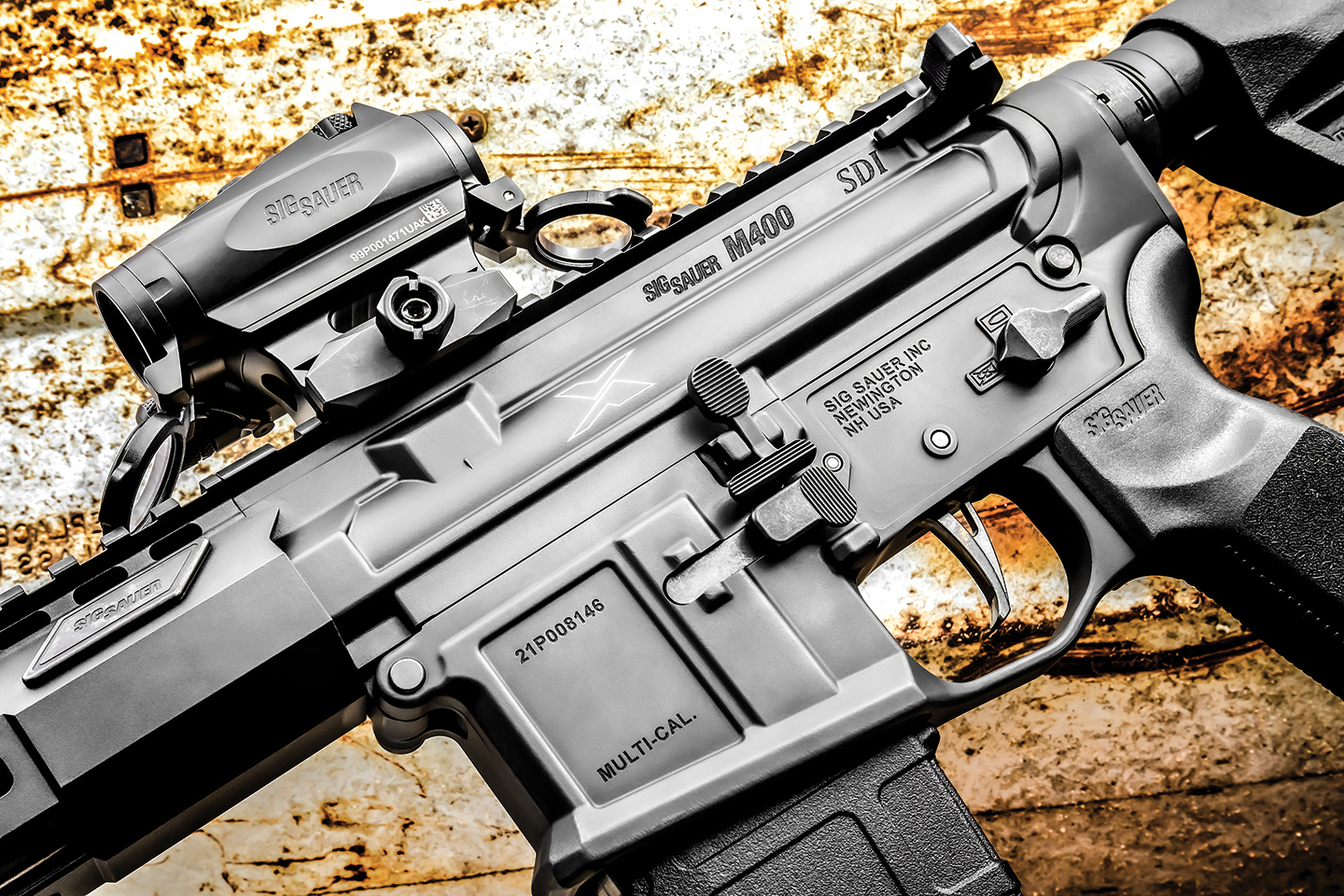
Essentially a fusion of the piston-driven, military-oriented Sig Spear LT and a standard DI AR-15, the Sig M400-SDI has virtually every custom feature a shooter could want and would often add, but straight out of the box. The heart of the platform is a black anodized, milled aluminum lower receiver with a flared mag well, mildly recessed relief cuts, and Sig Sauer logo. For those who like to customize, it is worth noting that all the controls are already fully ambidextrous, to include the safety, mag release, and bolt catch. The latter consists of a one-piece Geissele-style “Maritime” bolt catch on the left, which is attached through the receiver to a lever just below the ejection port, which can be actuated by pushing up or down vice inward with the trigger finger, as with some POF-style receivers. The six-position receiver extension includes a staked castle nut and carries the slim but functional Magpul SL stock. The polymer grip is Sig Sauer’s proprietary and very comfortable MCX reduced-angle model, which includes an insert molded for two CR123 batteries. Last but certainly not least is the flat-faced Matchlite Duo flat-faced two-stage trigger. While not a Geissele or Hyperfire, it’s still a two-stage trigger and plenty serviceable. My copy broke from 4.5-4.75 pounds depending on where I placed the gauge, with minimal take-up and reset.
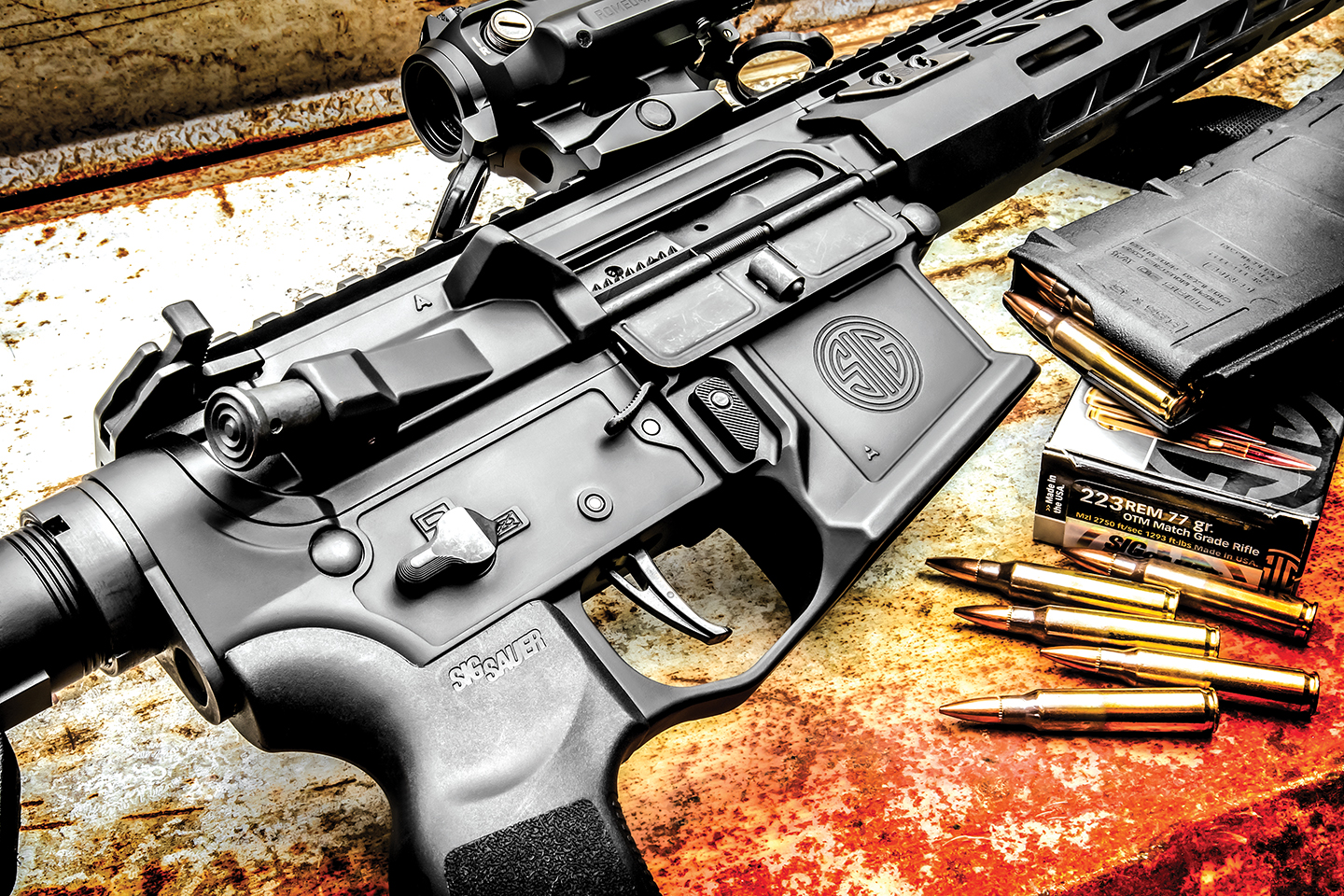
The Sig SDI upper has a 16-inch, mid-length gas system, 1:7 twist barrel, and 5.56mm chamber, topped with a combination flash hider/muzzle brake that resembles a longer version of the standard birdcage with small ports cut in the top.
Surrounding the chromoly steel barrel is a Spear-style handguard with three rectangular M-LOK cuts at 1 and 2 o’clock forward, with full-length availability at 3, 6, and 9 o’clock. The top of the upper includes the now standard Picatinny rail. The bolt and bolt carrier are standard M400 style and run via Sig’s proprietary ambi-charging handle. There are roll pins where the charging handle latches engage with the receiver, allowing them to be replaced if that area should ever get worn down from use. Necessary? Debatable, but it’s a nice touch. When mated to the lower receiver, the Sig SDIs upper has zero play, and the takedown pins are likewise very tight. The tight fit is due in part to high tolerances in the machining, along with a polymer spacer inserted just behind the trigger. The advertised weight of this carbine empty is precisely seven pounds. I weighed it on a digital scale myself just to confirm. Sure enough, the weight was as advertised, but it feels so much lighter that I still don’t quite believe it. The Sig M400-SDI comes in a box with a single 30-round Magpul Gen 2 magazine and gun lock.
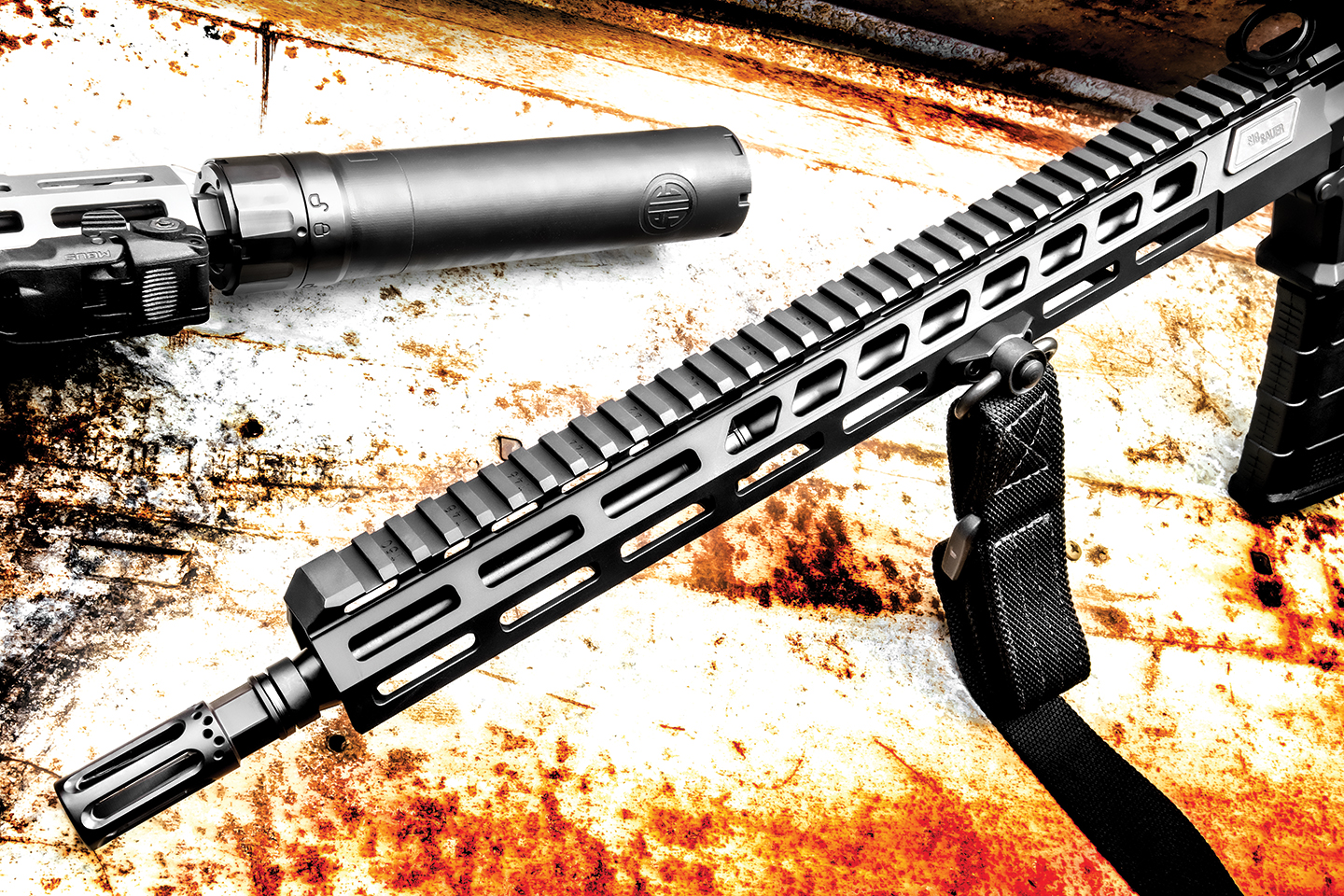
In its avowed quest for world domination, Sig Sauer makes all sorts of different shooting products, not just firearms. I am generally a fan of almost all of them. Sig magnified optics and range finders are near top end, and the Romeo 4XT Pro non-magnified red-dot that my Sig M400-SDI came equipped with also falls into this category. The Romeo 4XT is tested to military standards and is available in four reticle configurations. The optic has nine-day and three night-vision capable settings and is powered by a single AAA battery slung in a compartment at 4 o’clock, providing 50,000 hours of operation. Brightness settings can be actuated from buttons on top of the optic, and elevation/windage adjustments can be made using caps which allow audible and tactile adjustments. The optic comes with flip-down lens covers and an integrated Picatinny rail capable 1/2-inch hex mount that elevates the optic to 1/3 co-witness. The Romeo 4XT bears a resemblance to the Aimpoint Comp M5B and worked just as well at about $200 less.
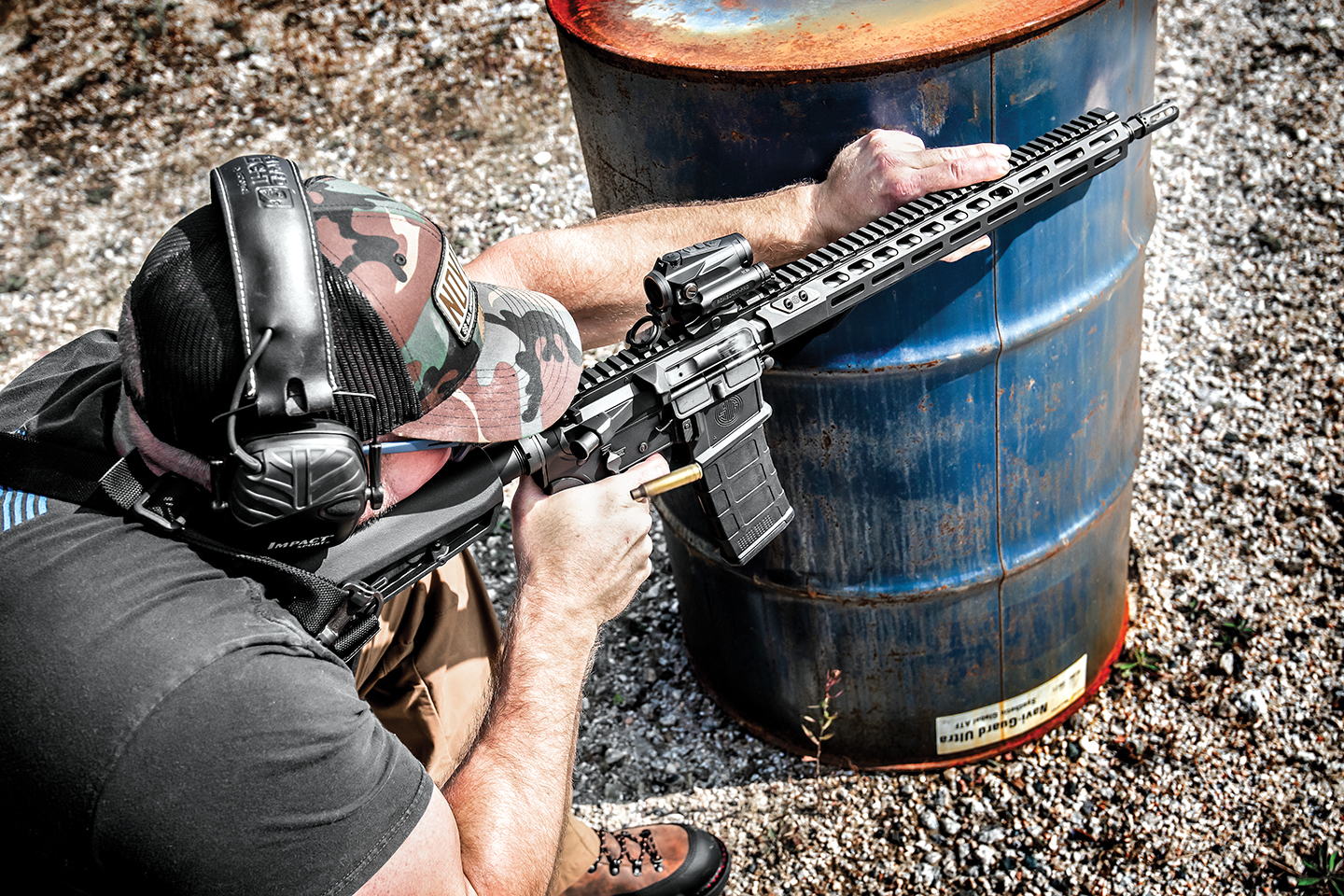
I spent more than my average amount of range time with the Sig M400-SDI and Romeo
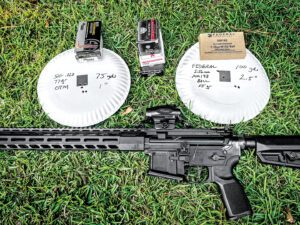
4XT optic, mostly because I just didn’t want to say goodbye. Two dedicated trips to the range proved that this carbine and optic combination was as accurate, reliable, and handy as expected. 100-yard performance with five-shot groups and five different loads varying from 55 to 77 grains off a bag rest averaged in the 3-inch range, with the best performance from good old Federal M193 55-gr ball at 2.5 inches. Great performance, especially considering that this was with nearly 55-year-old eyes and a non-magnifying red dot. The OCD in me toyed with changing to a LPVO, but I stuck with the Romeo 4XT and moved to 75 yards just to see how things went. They went well, with groups dropping by nearly half and the best at one inch with Sig’s notoriously accurate 77gr OTM rounds. Recoil was noticeably mild, with ejected brass landing in a nice tight pile roughly three feet away at 4 o’clock, indicating perfect gas and buffer weight. Reliability was near flawless with various polymer and metal mags, with the only issue being a single failure to lock back on an older PMAG — a magazine issue, not a gun issue.
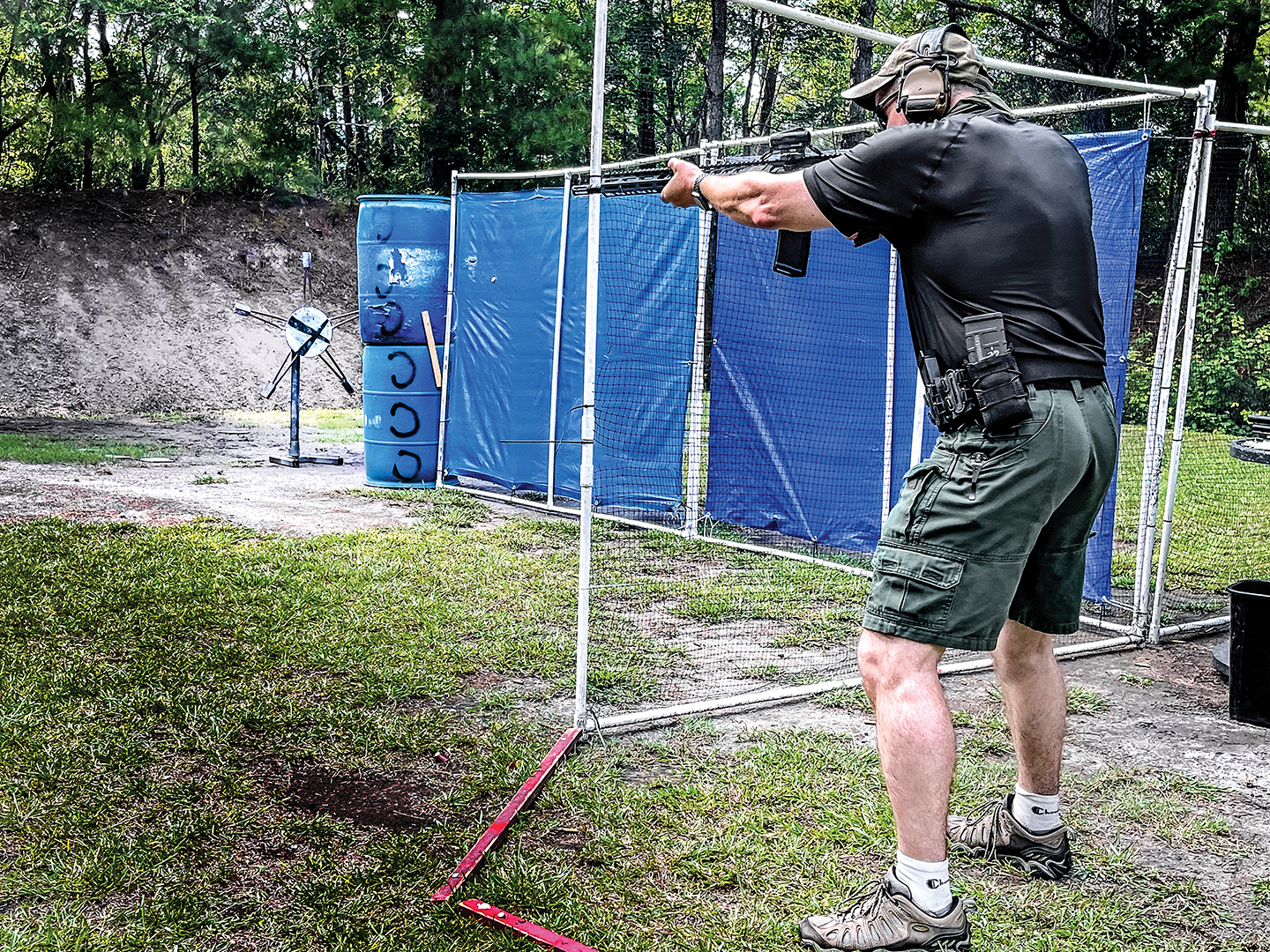
In the middle of my range trips came a 3-gun match. Not wishing to miss the opportunity, I put the M400-SDI through its paces. It performed outstanding near and far; it was light and handy and delivered fast hits, more than keeping up with more expensive rifles on the course. And that’s probably the best conclusion I can offer. If you are looking for an excellent AR-15 platform that comes stock with everything you need and most of what you want from the factory at a very reasonable MSRP ($1,649.99) for what you’re getting, do try the Sig M400 SDI. The carbine and Romeo 4XT optic can be found at Sig Sauer dealers. For more information, contact Sig Sauer; Tel.: (603) 610-3000; Web: www.sigsauer.com















